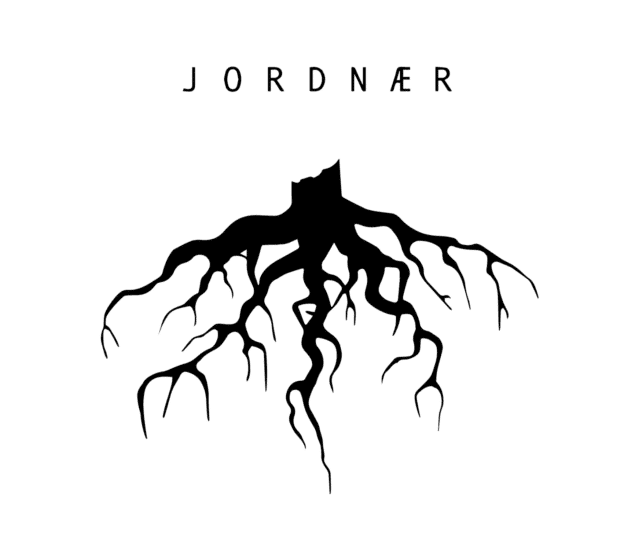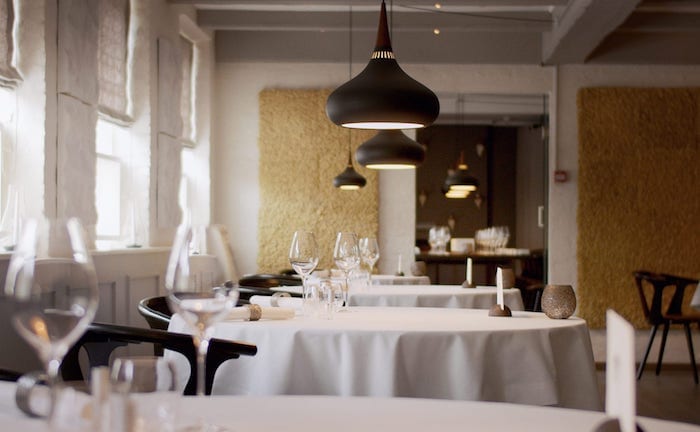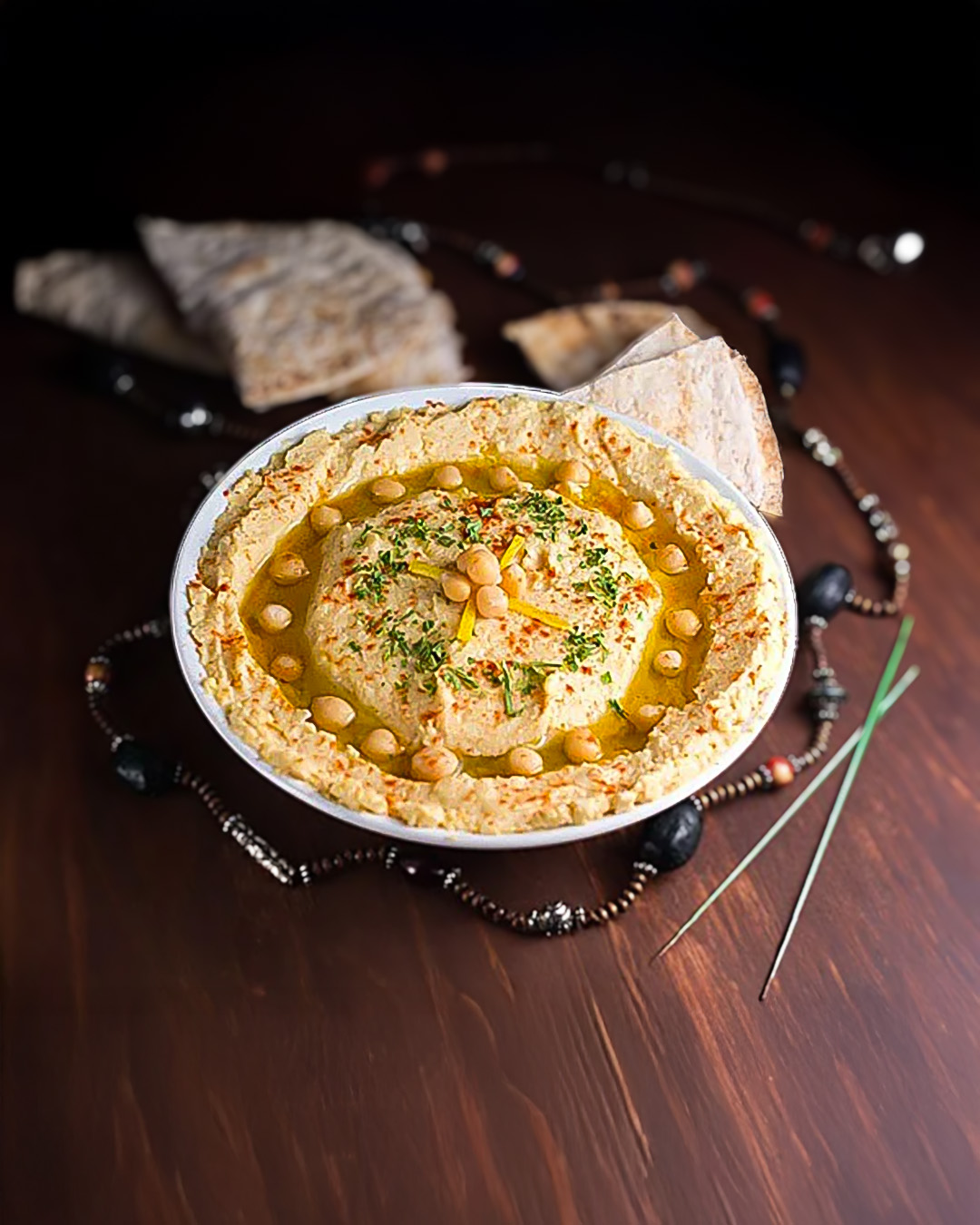As trends and demands in the hospitality industry change as rapidly as the seasons, restaurants struggle to keep up with the fast-paced competition. But Danish restaurant Jordnær proves that you can prevail by improving on the one fundamental thing that is always en vogue.
Supermodel Heidi Klum created a timeless catchphrase as the host of ‘Project Runway’ when she repeatedly warned the young fashion designers in-spe that “in fashion, one day you’re in. The next day you’re out.” The same mantra can be applied to the world of fine dining where an industry of cutthroat and fierce competition lies behind the beautifully plated courses.
Creative restaurateurs all over the world engage in a constant game of reinvention, keeping a finger on the pulse with popular trends and the ever-changing demands of increasingly picky consumers. Become boring and bland, and you’ll quickly discover there is another new it-restaurant ready to take your spot in the limelight on the proverbial Page Six. And what worse fate can you suffer than being forgettable?
A Strong Foundation
But at restaurant Jordnær (pronounced like “you’re there” but replacing the “th” with “n”), 10 kilometers north of Danish capital Copenhagen, the future seems more secure. The Nordic countries, and especially Denmark, have long been renowned for their simple yet innovative approach to fine dining, and Jordnær fits the mold perfectly, while still standing out as a unique gem.
Jordnær – which literally translates as ‘down to earth’ or ‘grounded’ – has made a heavy mark on the culinary map and has a two Michelin-starred accolade to their name despite having only been open for three years. The menu consists of mainly Danish classics remixed for modern days with a mix of Nordic, French and Asian ingredients all balanced in full harmony.
The produce is delivered daily and Jordnær treats it with respect. To avoid food waste as much as possible, you might see one ingredient pop up twice during your 18 course meal, but in such a creative way that it is almost unnoticeable. An example is the locally-sourced langoustine, where the heads are used to boil a broth for a jelly in the beginning of your dining voyage, while the chunky tails are wrapped in truffle and served with turbot for your main course. Down to earth with respect to Mother Earth.
The key to their success lies in the minds of restaurateur couple Eric and Tina Kragh Vildgaard, who used their vast experience in the industry to create Jordnær – a restaurant that stays true to its name and goes beyond the smoke and mirrors of the latest fads and instead focuses on a wholehearted and earnest experience.

Tina and Eric know that while beautiful wallpaper might lure people like moths to a flame, it’s a solid foundation that perseveres and keeps the lights on.
“At Jordnær it’s not about our egos or competing with other restaurants. We wanted it to be a place that we ourselves would visit and we constantly looked at it from the point of view of our guests. We treat our guests the best we can, and I believe that is what our stars in the Michelin-guide reflect, because after all it is a guide to guest experience and not an internal guide for the hospitality industry,” Tina says. She is in charge of the front of the house while her husband Eric is captain of the kitchen, and it is quickly evident that the couple cherishes their staff deeply and attributes a great part of their success to their team.
Their approach bears fruit, and at the same time as they were awarded their second Michelin star earlier this year, Tina Kragh Vildgaard also took the stage to accept Michelin’s prestigious “Welcome & Service Award 2020”. This has raised the service bar not only in the Nordic countries but globally, and proved that just like ‘The Tortoise and The Hare’, a steady and consistent will win the race.
The Little Black Dress of Hospitality
Iconic designer Coco Chanel invented the “Little Black Dress” in the 1920s. She wanted to create a versatile piece that reached a broader market. The versatility and timelessness, along with the neutral black color, has made it an iconic item that has been around for a century and that will never go out of fashion. But even it has been tweaked and altered to fit even the pickiest wearer.
Great service is the Little Black Dress of the hospitality industry and will never go out of fashion, but it can also be an unknown X-variable – and too much service can be a detriment. At Jordnær they seem to have solved the equation.
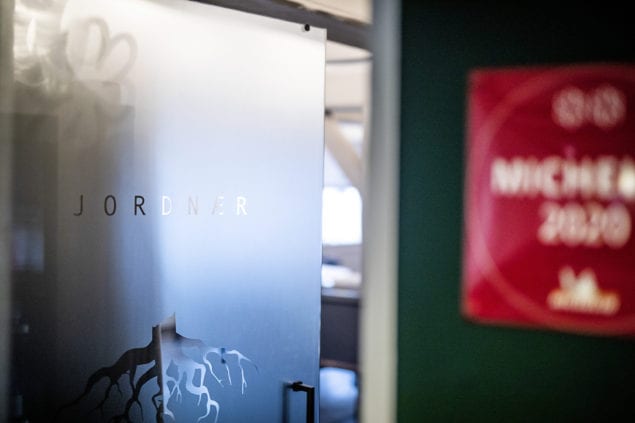
“The service needs to be there, but without being there in an intrusive way,” Tina says and elaborates: “There is nothing missing from the service point of view that you would expect from a Michelin-awarded restaurant. But it’s a subtle and unnoticeable service, which is how it should be in our opinion.”
Instead, it is the extra attention to detail of the whole experience that is their fortay. Jordnær shifts their focus more to the ambience of the whole restaurant, while remaining professional. They create an atmosphere where guests feel as relaxed and comfortable as they would at home. You can come as you are, whether it’s a plain t-shirt and shorts or your finest suit; straying away from the norms of a fine dining restaurant that can often feel stiff and unwelcoming.
“From the moment they enter we want them to feel like they are going to a dinner party at a friend’s apartment,” Eric adds.
Wholesome Service Before, During and After
But the level of service offered at Jordnær is so high that it doesn’t just start the moment you arrive. Before you arrive, Jordnær strives to create an intimate and familiar connection through personalised email correspondence and savvy googling skills. This has earned Tina a playful title amongst the team.
“Tina is our personal CIA agent,” Eric laughs.
“She spends a lot of time on each of our guests so she ensures we not only know their names but also dig a little deeper.”
Tina scours through the world wide web and uses easily accessible social media sites from Facebook and instagram to Pinterest and even LinkedIn to get a deeper understanding of who their guests are and what is important in their lives. These are used as keywords to spark up conversations for their dinner guests.

“We had one guest from the Danish Symphony Orchestra. She was retired but by looking at her profile we could see she had participated in a well-known quiz show on television about classical music. We remembered seeing her and that brought up a natural conversation where we complimented her for her talent and she was pleasantly surprised about that,” Eric says and adds that they still respect the privacy of people and never do anything to invade anyone’s privacy and only use what is publicly available online.
This also ensures that each of their tables will get an experience tailored just for them, which is probably why guests tend to leave with a huge smile on their face that will follow them to bed.
A Smile and a Scone
But as the smile subsides as you hit the bed and enter dreamland it appears again the next day, when Jordnær sends each of their parties a personalized email and thanks them for their visit. Kind of like a good hostess will do to her guests after a dinner party.
“It comes naturally from the experience they had the evening before during their visit. It’s not something that we feel we have to do, but something we genuinely want to do ,“ Tina says and adds that sometimes the guests actually beat them to it, and that they receive plenty of unsolicited emails from their guests thanking the team for a great night. Tina also adds that she thinks the standardised way of the industry is outdated.
“Other places send surveys asking about their experience, but we really don’t care about a survey. It tells us nothing useful. We rather send something personal that makes the guests wake up with a smile the day after and think back on the amazing night they had,” Eric adds.

The standard way of doing things can easily feel very forced and sometimes the wording, as well as the options of a survey don’t paint a wholesome picture and can be skewed to give the restaurant a better review than really intended.
But a smile isn’t the only thing you are going to wake up with, and Jordnær has upped the ante even higher.
“We are currently working on a breakfast box that we want to give our guests, so as they leave they get a box with scones and homemade jam and butter to take with them along with a personal handwritten letter, so they don’t have to worry about breakfast for the morning after”, Eric says and adds that it’s also suited for that late night snack hunger that undoubtedly shows up for a lot of us.
At the time of the interview, the last step was finding suitable boxes, and by now their late night/early morning treats are already a staple at Jordnær. This is addition to their vision of having a restaurant that doesn’t focus on their ego, but the experience of the guests.
Adding Drive and Passion to The Team
Recently Jordnær strengthened their grasp on service by adding a new member to their team who has a very specific point of view of what service really means.
“From my experience, many of the fine dining restaurants do the standard follow-up of a survey with ulterior motives. They do it to boost their ego and hear how good they are. For us it’s the opposite really. If we did a good job, the guest will naturally let us know, and we don’t need to push an answer down their throats. It goes hand in hand with giving great service to the guests without the guests actually noticing it’s there. We don’t want to be flamboyant”, Alberto Segade adds.
Alberto Segade is one of the newest additions to the management team as the head sommelier and assistant restaurant manager and has definitely brought his pizzazz to Jordnær and helped grease the wheels with his vast experience. Originally from Galicia, Alberto has worked in haute cuisine establishments like London’s Scott’s and Fera at Claridges as well as Racine in Reims, France. His expertise is so renowned that The Times did a portrait of him, discussing how he was one of the leading forces behind revamping the perpetual wine menu in one of the leading fine-dining and trendsetting food capitals of the world, London.

It was a mix of good connections and spare time that brought Alberto to Jordnær. Living in France at the time, he knew the then assistant restaurant manager at Jordnær and as he had some time in-between jobs, which he decided to spend in Copenhagen. The connection was immediate.
“From the moment we met him we could feel his passion. He checked all the boxes we were looking for, he had the drive and the personality, but without making it about him. It was obvious to us he had a laid back coolness that could help our guests venture into the world of wine and he proved to truly be an upgrade to the restaurant,” Eric recalls.
Alberto spent the summer there then left for a job that awaited him in England, but Eric and Tina were not ready to let go of the spanish talent and started to court him.
“But he had to also be ready to join us so we told him that whenever he was ready he should just let us know and we would have a place for him here. Five months later he sent me a message asking if the offer still stands and the rest is history”, he adds.
It was the vision of service at Jordnær that intrigued Alberto.
“They wanted to focus more on the sommelier services and I was really intrigued by their vision of being humble towards the guests and guiding them rather than telling them,” Alberto says.
He explains that he hasn’t made any major changes at Jordnær but more helped streamline their processes making it more polished and organised. It is apparent he fits the mold of humility and, like Tina, points to a collective team effort as the reason for their success.
Building a Strong Team
The team is also a constant work in the making. When Jordnær first opened three years ago Tina and Eric had a clear vision of the level of service they required from their team, but unlike many fine-dining restaurants that prefer their team to anonymously fade into the background, Jordnær looks more at the softer qualities they possess.
“Since opening we have gradually added more people to the team to strengthen our vision. Of course a certain skill set is required, but we go by personality. We get a lot of applications but the ones we choose are the people that we feel are a perfect fit to the vision we have at Jordnær. They are all very humble and honest. We are all very different in our service styles,” Tina says while Eric offers an elaboration:
“We have all worked with the flamboyant in-your-face waiters that talk down to the guest and act as know-it-alls. They might want to sell a wine that they know a lot about instead of actually listening to the guests and helping them find something that they like. It’s good that the waiters try to sell a wine that the sommelier has said goes well with the food, but it’s even more important to listen to the guest rather than the sommelier. As a guest you can sometimes sit and feel stupid, because you ask about a wine that the waiter clearly thinks is wrong to order. It shouldn’t be like that.”
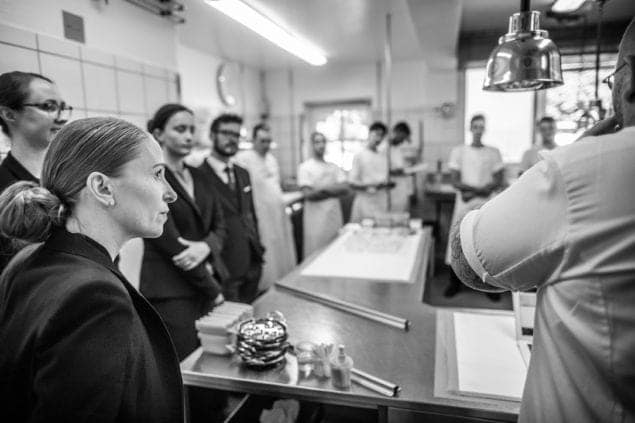
In the end, it boils down to Tina, Eric and Alberto trusting their gut and instinct and also knowing the limits of what even they can do.
“The thing is you can always tweak the technical skill of a waiter, but you can’t change their personality. That is something deeply implemented into a person.” Alberto adds.
It might actually be an advantage if your canvas is semi-clean when you join the team at Jordnær, whether it be in the kitchen or front of the house. On paper you will still have designated waiters and cooks, but on a practical level the lines are more blurry.
Knowing all the aspects of the restaurant is important for Tina and Eric and waiters are taught the basics in the kitchen, while the kitchen staff serves food just as often, if not more, than the waiters. This has also proved to be an asset at their staff meetings where each team member knows enough about the restaurant as a whole, and ideas for improvement are many.
“We value all our team members equally and we add the strengths of each of them to Jordnær. Good ideas are always welcome from any member of the team whether it’s the chef’s students or the restaurant manager. It’s bricks in our foundation to make us stronger,” Eric says.
No Dress Code Required
But when the service is so grounded and personal, does it not seem like a huge contradiction that the staff wears stuffy uniforms, that take away any personality from the waiters and instead makes them look bland and rather boring? The answer lies in the question really.
“There is this misconception about being uptight when you wear a suit, like you can’t be humble and give down to earth service wearing a uniform, but it’s not about that. If you have a humble personality it shines through the uniform,” Tina says and adds that it strengthens the being there but not being there.
“It’s more about creating a unison in the same way doctors wear medical coats. It’s the interactions with the guests that matter. Whether you are wearing a suit it’s not important.”
Her last sentence can be interpreted in two ways, because just as waiters wearing suits is not important if they have a good personality, it’s not important for the guests either. Jordnær really emphasises that they want the guests to feel as comfortable as possible when they come, so if comfort means shorts and a t-shirt it makes no difference and you are welcome as you are.
“We had a guest calling us the other day who had a reservation. It was 32 degrees celsius and he asked about the dress code. Hesitantly he wanted to ask if it was okay to wear shorts, and he was relieved when we reassured him that of course he could. They can wear whatever they want,” Eric says but adds with a laugh that they do abide by the classic saying of ‘No shoes, No shirt, No service’.
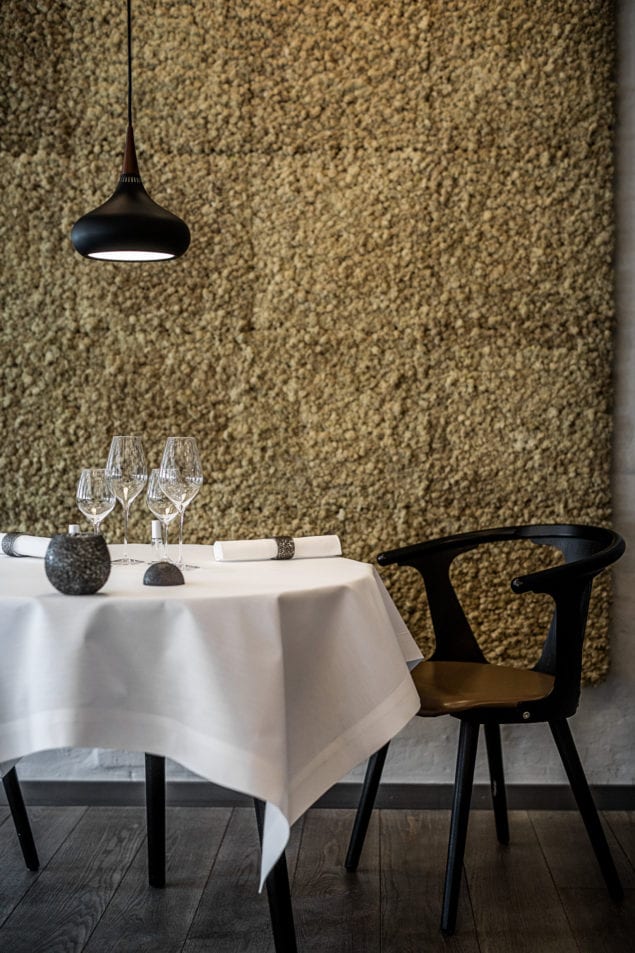
The mantra of coming as you are is also something they live by themselves. Eric explains that his dress shirt is packed away for those extra special occasions when the formal shirt is absolutely required. A black t-shirt is his preferred clothing item no matter where he goes, and no one should judge a book by the cover.
“When I go out my money is as good as the next man’s, so if I am not welcome at a place because of what I am wearing then I don’t want to be there in the first place. For us, all our guests are valued and appreciated and it doesn’t matter if you are a CEO or a student who saved up to come visit us. You will get the same experience and we don’t give beneficial treatment to anyone. Measuring people by how they look is a personal pet peeve of ours and there is nothing worse than spending a minor fortune at a restaurant but having a feeling of not being welcome,” Eric says.
He continues and explains how many people still think that this is a solid rule of fine dining. These guests are tense when they arrive because they try to uphold a posh poise, often resulting in sweat and discomfort from the heavy fabrics of elegant evening wear and they forget that a night out of dining should actually be less stressful than cooking at home.
“And as soon as we come down to their table and chat with them they immediately become comfortable and it’s just a visible change in their body language and demeanor. Guests are here to enjoy. You don’t go out to places where you don’t feel welcome and you certainly don’t pay thousands of kroners for a meal at a place where you don’t feel comfortable. That’s the piece of the puzzle missing in fine dining – disregarding your own posh and better-than thou attitude and instead shifting the focus on having genuinely smiling guests that are having the time of their lives,” Eric says.
He is immediately backed by Tina, who circles back to the name of the restaurant. She also cleverly uses a visual reference to, properly, the most relatable scene in the movie Pretty Woman to state her case.
“It’s the name Jordnær. The meaning literally is down to earth and it’s not just a sassy catchphrase but a way of living that we live strongly by. Most of us have probably had the experience of entering a deluxe boutique of some sort and the people working there, who are actually being paid to assist their customers, might just glance at you and pass judgement on you, believing that you definitely can’t afford anything in there, so why even bother trying to help you?. At Jordnær we want to welcome everyone at the same level.” she says.
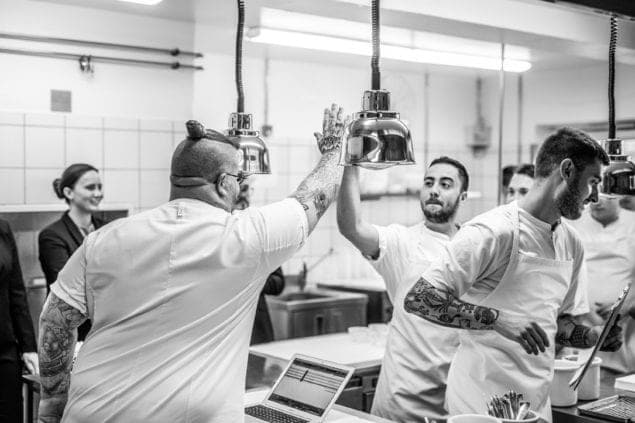
Inclusion of a tea-menu, inclusion of people
And welcoming people at the same level is not just referring to social status and appearance, but also in different groups of the society as well as within the guests of the party.
Alongside their accompanying wine menu, Jordnær is the first restaurant in the North to have added a non-alcoholic substitute that can even intrigue the biggest wine lovers with their tea menu. This solves one of the industry’s biggest oversights, and the original idea was partly Alberto’s.
“The choice of a tea menu on the beverage side is something we started doing in London five years ago,” Alberto says and recalls the situation that sparked the idea.
Participating in a wine fair, he and his partners stumbled upon a winery that used different variations of teas as a palette cleanser for the visiting guests at the fair.
“We thought it was amazing and left the fair thinking it was the most interesting part. Of the exhibition. We started to develop it with the idea of using it in our restaurant,” he says and explains how it solved a huge roadblock that especially London experiences.
“In London we have a lot of guests from the middle east who don’t drink alcohol, which causes a huge demographic to steer away. This was the answer to the problem while also being a more creative choice than serving the run of the mill Coca Cola and Juice”.The teas are made in house and are chilled at around 15 degrees, which gives it the same temperature as the wines. Alberto explains how it’s also a healthier choice than sodas and juices that have a high sugar content. It is also served in wine glasses and mimics the color palette of the wine, so that you don’t feel like the odd one out at the table. Lastly it has acidity and tannins like the wine, and the incredible variations of different teas makes it easy to pair perfectly with the food, offering basically everything the wine does but without the alcohol. The teas are not just classical teas as you know them.
“We don’t only work with the classical tea flavours, but also a large selection of herbs because we really want to keep the caffeine level down as much as possible as 10 glasses of caffeine beverages might not be how you want to end your evening,” Alberto explains while giving us a few examples of the pairings made.
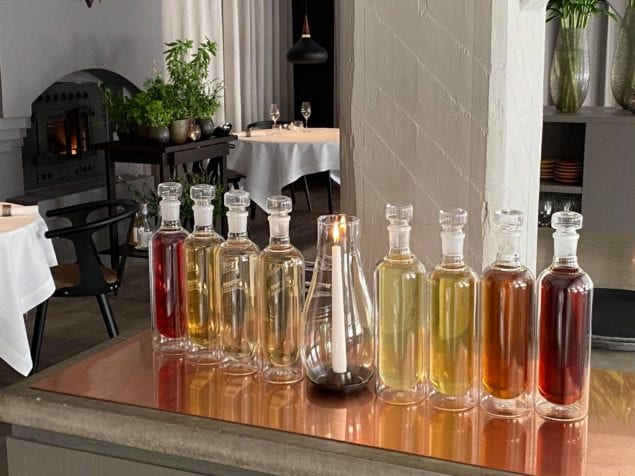
“An example is our caviar that we serve with a tea made from an almond blossom from Spain. It has a nutty taste but also mixed with floral flavour that is a perfect palette for the course. Or if you want something richer, then we have a tea made on roasted oolong from Taiwan that can be brewed to have different flavours, so you can have it be more smokey or more salty. There are so many varieties of tea it’s incredible,” Alberto adds and admits that the addition is both more time and cost consuming, but they are still just dipping their toes in the water and will dive in deeper with time.
Alberto is almost certain that popularising tea into fine dining is slowly brewing in other restaurants in the North and notes both guest preference and personal feedback as reference.
“People are now more than ever thinking more about what they put into their bodies and alcohol and sugar are two of the biggest vices people tend to drop. So I think a tea menu has potential to become popular on a much bigger level. On a pure digestive level, it is also harder on the body to digest 10 glasses of juice than it is 10 glasses of tea.”
A juice menu as a substitution is something Albert has only tried once, but the memory sticks as a fairly unpleasant one. He recalls how the sugar left him a bigger headache than he would ever get from a wine menu, and a sugar rush so close to bedtime does no one any favours.
Alberto also noted that the hospitality industry of the area is becoming more and more fascinated with the concept and he is often approached for tips.
“I get feedback from other restaurateurs who come and try it and some have even tried to play around with it. It definitely has possibilities as people start to expect more than just the wine menu, and let’s face it. The wine menu has not had a proper update worth mentioning since its inception which is almost ancient by now”.
For more info on Restaurant Jordnær, visit www.restaurantjordnær.dk
